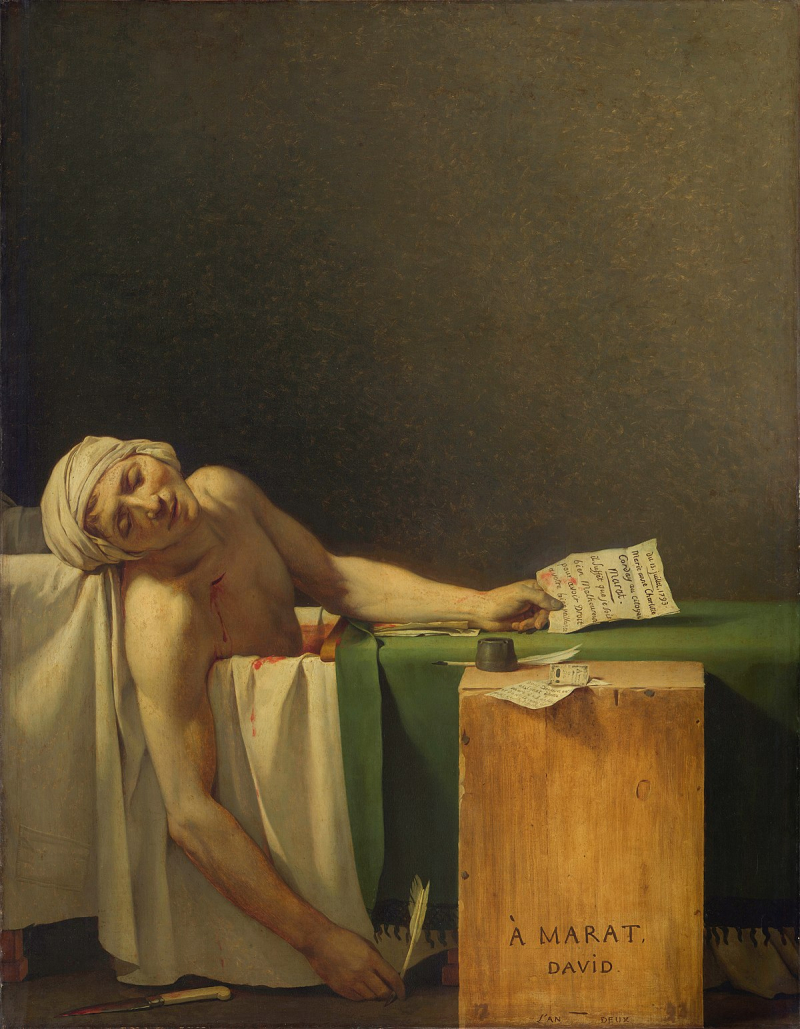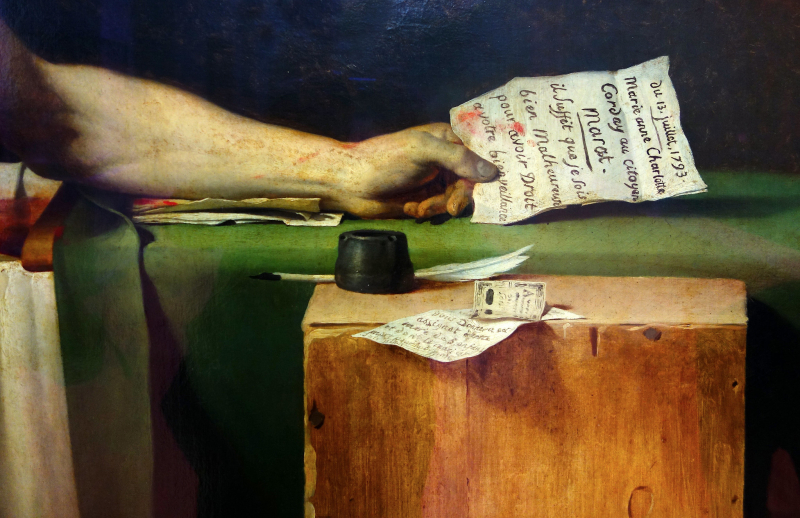The Death of Marat
Jacques-Louis David painted a portrait of the assassinated French revolutionary leader Jean-Paul Marat in 1793 titled The Death of Marat. As the foremost French Neoclassical painter, a Montagnard, and a member of the revolutionary Committee of General Security, David created one of the most famous paintings inspired by the French revolution.
The artwork, which was made in the months following Marat's passing, depicts Marat laying lifeless in his bathtub following his assassination on July 13, 1793, by Charlotte Corday. The first modernist work, according to art critic T. J. Clark, was David's painting because it "took the matter of politics as its material, and did not convert it."
He was in the bathtub when Charlotte Cordy fatally stabbed Marat. Marat's burial arrangements and the painting of the scene of his death were given to David. The knife and Cordy's petition represent Cordy's riches, and Marat's drooping eyelids and cocked head resemble the figure of Jesus Christ hanging on the cross.
The picture is part of the collection at Belgium's Royal Museum of Fine Arts. The artist's studio made a reproduction, which is on exhibit at the Louvre.












